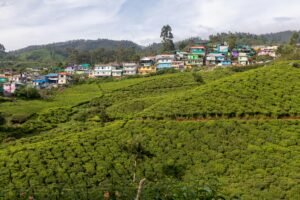Introduction
Poultry farming, a cornerstone of agricultural practices worldwide, plays a crucial role in meeting the global demand for protein-rich food. From small family-run operations to large commercial enterprises, poultry farms provide eggs and meat, contributing significantly to food security and the economy. This article delves into the history, operations, types, and advancements in poultry farming, highlighting its importance and the challenges it faces.
A Historical Perspective
Poultry farming has ancient roots, with evidence of domesticated chickens dating back to 5400 BCE in China. Initially raised for eggs, poultry farming gradually evolved to meet the growing demand for meat. Over the centuries, selective breeding, improved husbandry practices, and advancements in veterinary care have transformed poultry farming into a highly efficient industry.
The 20th century marked a significant shift with the advent of industrial-scale farming. Innovations in feed, housing, and disease control enabled farmers to raise larger flocks more efficiently, making poultry products affordable and accessible to a wider population.
Types of Poultry Farms
Poultry farms can be broadly categorized based on the purpose and scale of their operations:
- Broiler Farms: These farms focus on raising chickens for meat production. Broilers are typically bred for rapid growth and are ready for market within 6 to 8 weeks. Modern broiler farms employ advanced feeding techniques and controlled environments to optimize growth rates and health.
- Layer Farms: Dedicated to egg production, layer farms manage hens that are specifically bred for laying eggs. Layers start producing eggs around 18-20 weeks of age and can continue for up to 72 weeks. Efficient layer farms balance nutrition, lighting, and housing to maximize egg yield and quality.
- Free-Range and Organic Farms: These farms cater to the growing demand for ethically raised poultry. Free-range farms allow birds to roam outdoors, while organic farms adhere to strict organic feed and health standards. Both practices aim to enhance animal welfare and produce healthier, premium-quality products.
- Specialty Poultry Farms: Some farms focus on raising specific breeds of poultry, such as turkeys, ducks, or geese. These farms often cater to niche markets and festive seasons, providing a diverse range of poultry products.
Advancements in Poultry Farming

Technological advancements have revolutionized poultry farming, enhancing efficiency, productivity, and sustainability:
- Automated Systems: Modern poultry farms utilize automated feeding, watering, and egg-collection systems. These innovations reduce labor costs, improve precision, and ensure consistent care for the birds.
- Environmental Control: Climate-controlled housing ensures optimal temperature, humidity, and ventilation, reducing stress and disease risks for the poultry. Such environments promote better growth and higher productivity.
- Genetic Improvement: Selective breeding programs have produced poultry breeds with desirable traits, such as rapid growth, disease resistance, and high egg production. Genetic advancements continue to improve the efficiency and sustainability of poultry farming.
- Sustainable Practices: Increasing awareness of environmental impact has led to the adoption of sustainable practices. These include waste recycling, renewable energy use, and responsible sourcing of feed ingredients, contributing to a more eco-friendly industry.
Challenges and Opportunities

Despite its advancements, poultry farming faces several challenges:
- Disease Management: Avian diseases, such as avian influenza, pose significant threats to poultry health and productivity. Effective biosecurity measures and vaccination programs are essential to prevent outbreaks and ensure flock health.
- Animal Welfare: There is growing public concern over the welfare of farmed poultry. Addressing these concerns involves improving living conditions, reducing overcrowding, and ensuring humane treatment throughout the birds’ lifecycle.
- Environmental Impact: Poultry farming can contribute to environmental issues, including water pollution, greenhouse gas emissions, and deforestation for feed production. Sustainable farming practices and technological innovations are crucial to mitigating these impacts.
- Market Fluctuations: Poultry farmers often face volatile market conditions influenced by factors such as feed prices, trade policies, and consumer preferences. Diversifying products and markets can help farmers navigate these uncertainties.
Conclusion
Poultry farming remains a vital component of global agriculture, providing essential protein sources and supporting economies worldwide. As the industry continues to evolve, embracing technological innovations and sustainable practices will be key to overcoming challenges and meeting the growing demand for poultry products. By balancing productivity with animal welfare and environmental stewardship, poultry farms can ensure a resilient and sustainable future.














